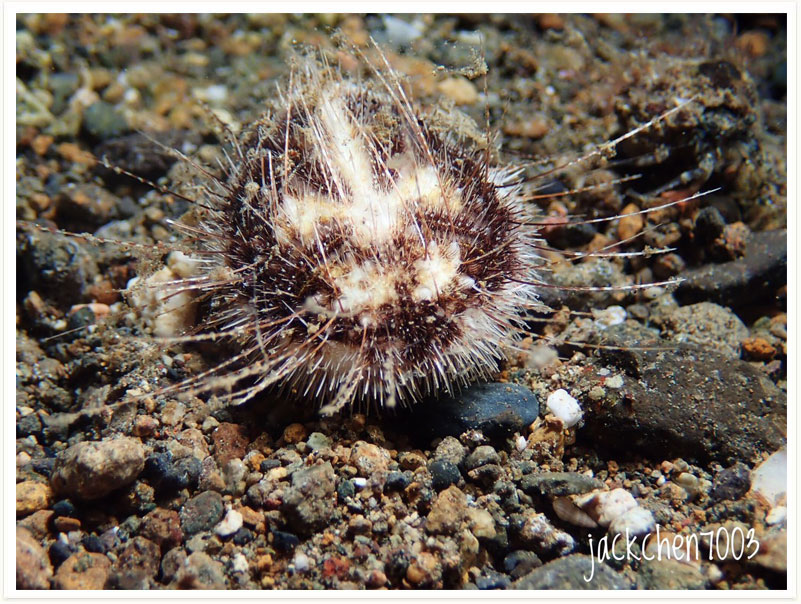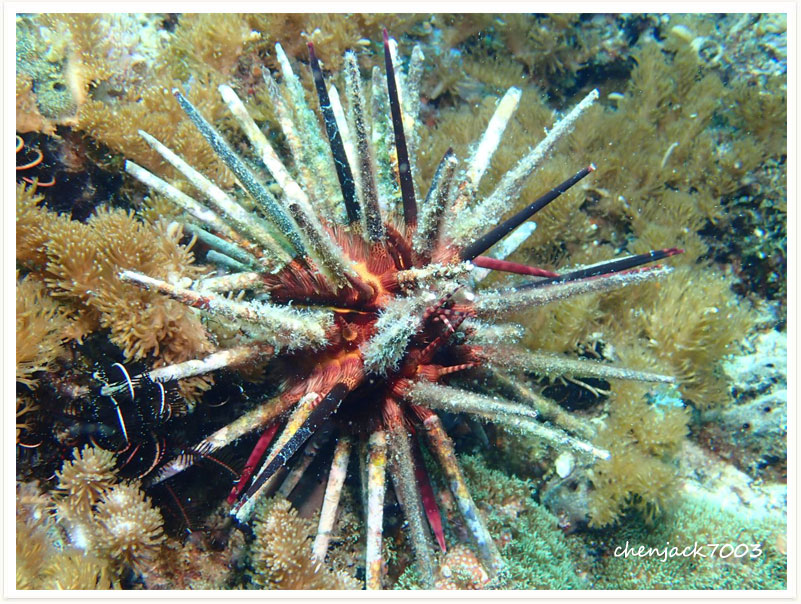白棘三列海胆
Collector urchins are dark in color, usually bluish-purple with white spines. The pedicles are also white, with a dark or black base. Individuals found at Green Island had orange-tipped spines. The spines of some specimens are wholly orange, while those of others are only orange-tipped or completely white. This color disappears when the individual dies or is taken out of the ocean, and is difficult to preserve. Collector urchins reach 10 to 15 centimetres (4 to 6 in) in size. Debris tends to “collect” on these urchins, hence their name.


